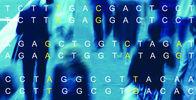The genes we’re dealt
By Erik Parens,
Aeon
| 11. 10. 2020
Over the past decade, economists, sociologists and psychologists have begun collaborating with geneticists to investigate how genomic differences among human beings are linked to differences in their behaviours and social outcomes. The insights sought are wide-ranging: why do some of us have a greater sense of subjective wellbeing than others? Why do some go further in school than others? When it comes to income, why do some people earn more and others less?
As surprising as it might be to readers familiar with the history of often-ugly efforts to investigate complex behaviours and outcomes through genetics, some prominent members of this new cohort of researchers are optimistic that their work will advance progressive political agendas. According to the progressive authors of a recent European Commission report, insights from what I call ‘social genomics’ are ‘fully compatible with agendas that aim to combat inequalities and that embrace diversity.’
Indeed, findings from social genomics are compatible with what we in the United States consider Left-leaning agendas to combat inequalities. They are, however, equally compatible with what we think of as Right-leaning...
Related Articles
By Josie Ensor, The Times | 12.09.2025
A fertility start-up that promises to screen embryos to give would-be parents their “best baby” has come under fire for a “misuse of science”.
Nucleus Genomics describes its mission as “IVF for genetic optimisation”, offering advanced embryo testing that allows...
By Hannah Devlin, The Guardian | 12.06.2025
Couples undergoing IVF in the UK are exploiting an apparent legal loophole to rank their embryos based on genetic predictions of IQ, height and health, the Guardian has learned.
The controversial screening technique, which scores embryos based on their DNA...
By Frankie Fattorini, Pharmaceutical Technology | 12.02.2025
Próspera, a charter city on Roatán island in Honduras, hosts two biotechs working to combat ageing through gene therapy, as the organisation behind the city advertises its “flexible” regulatory jurisdiction to attract more developers.
In 2021, Minicircle set up a...
By Vardit Ravitsky, The Hastings Center | 12.04.2025
Embryo testing is advancing fast—but how far is too far? How and where do we draw the line between preventing disease and selecting for “desirable” traits? What are the ethical implications for parents, children, clinicians, and society at large? These...




